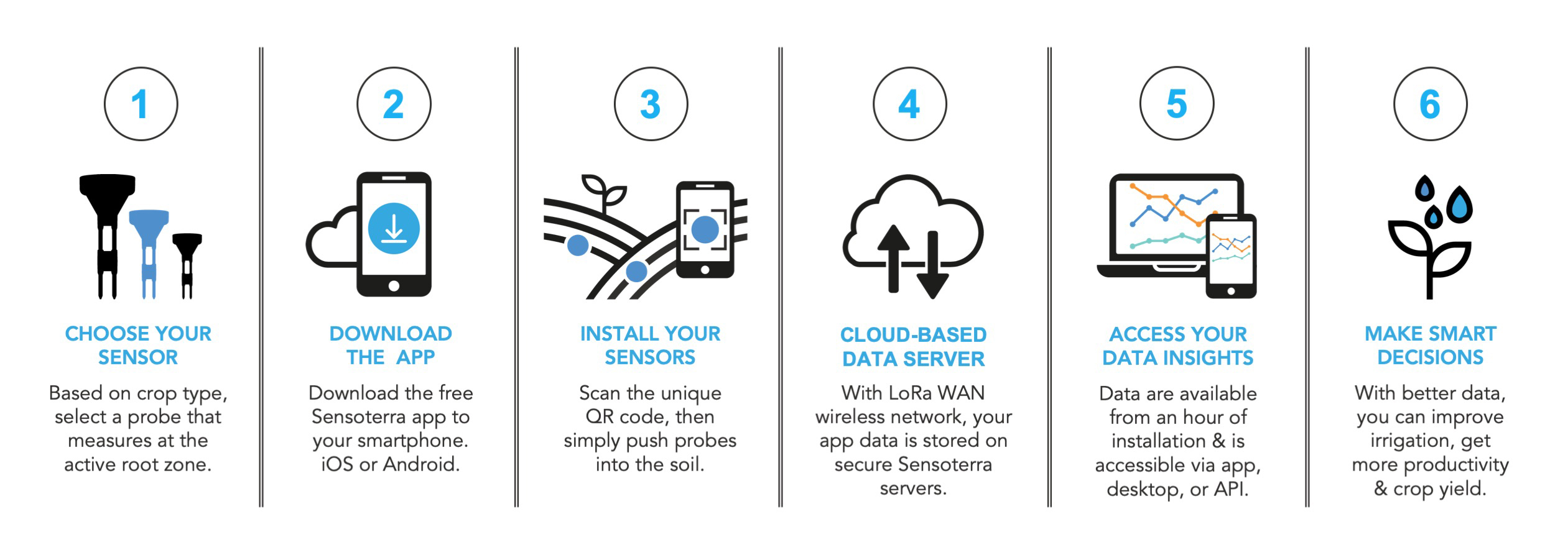With proper use and care, the sensors should last 3 years. To get the most out of your sensors, please keep these tips in mind:
Soil contact is important so should you feel an obstruction or resistance beneath the ground, try to find another spot to place the sensor.
Placement of sensors is key! Place sensors in a general line of sight of the gateway. Do not place sensors near any large (metal) structures like a grain silo, electricity tower, or water tower.
The default setting is for measurements once per hour. It is possible to increase the frequency, however this uses more battery and will decrease the expected life.
Moving a sensor to a new location is easy If you want to move a sensor to a new location, repeat steps 3 through 5. Make a note of the sensor you are moving so you are aware when reviewing the data. The sensor is locked to the first user account the sensor is linked to, which means you cannot add the device to another account. This is a protection feature in case someone else tries to access your data.
To maximize your battery life when not in use, remove the sensors from the ground and store them upside down in a dry place. This is particularly important when your gateway is turned off. Do not leave the sensors in the soil with no LoRa coverage. For more information see our SD Installation guide



